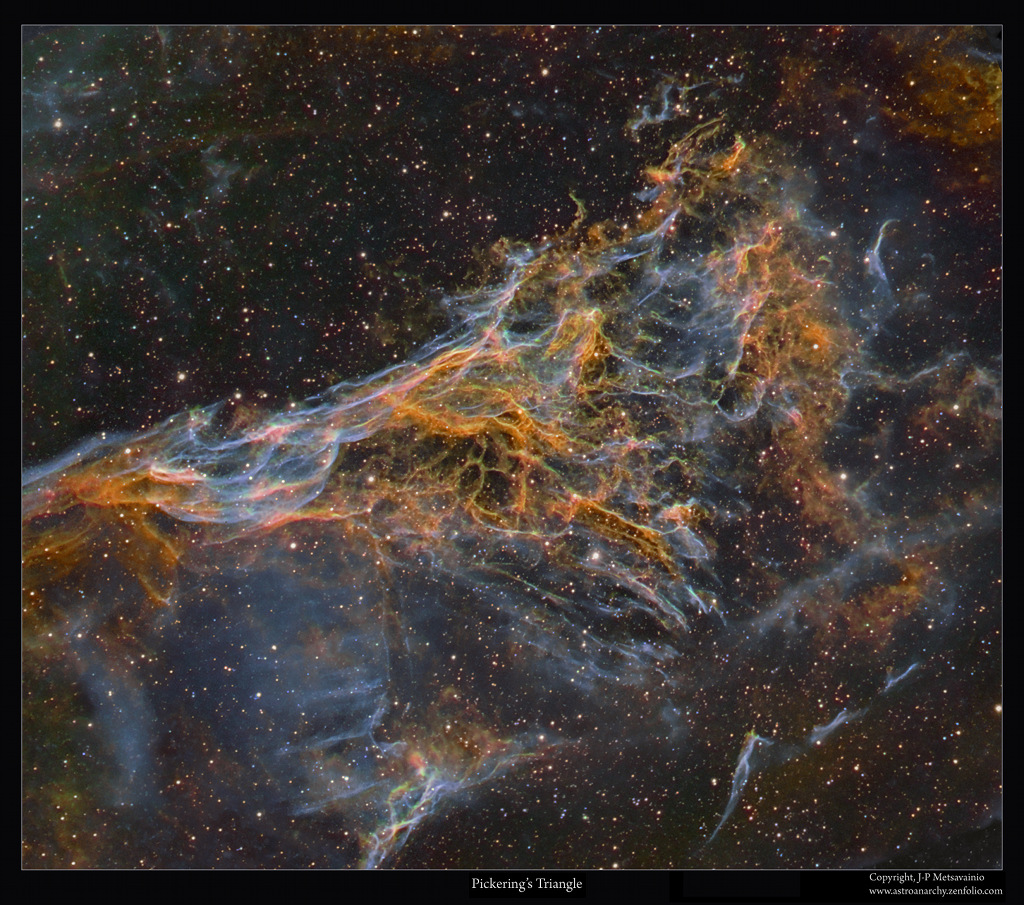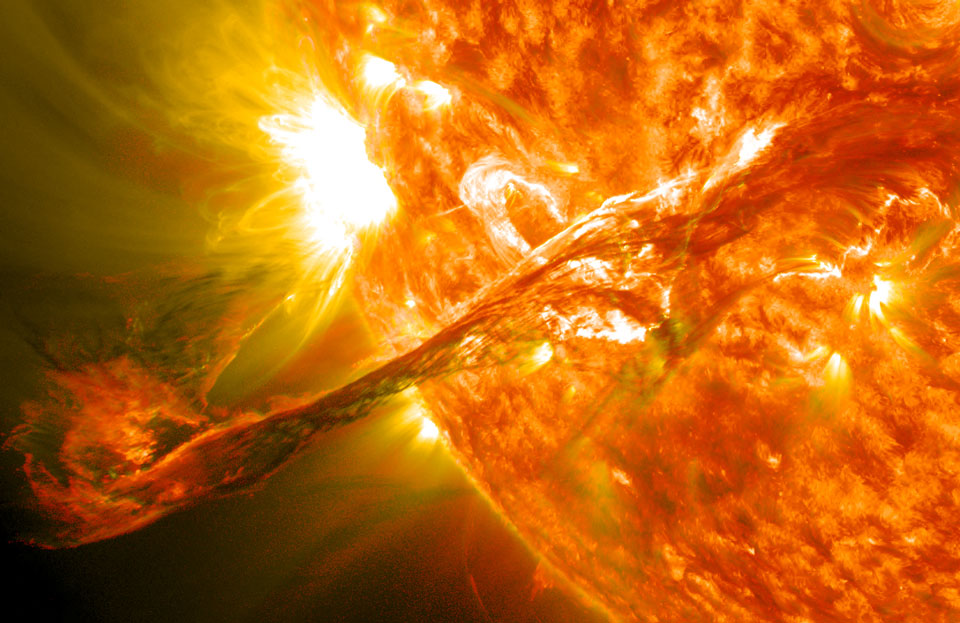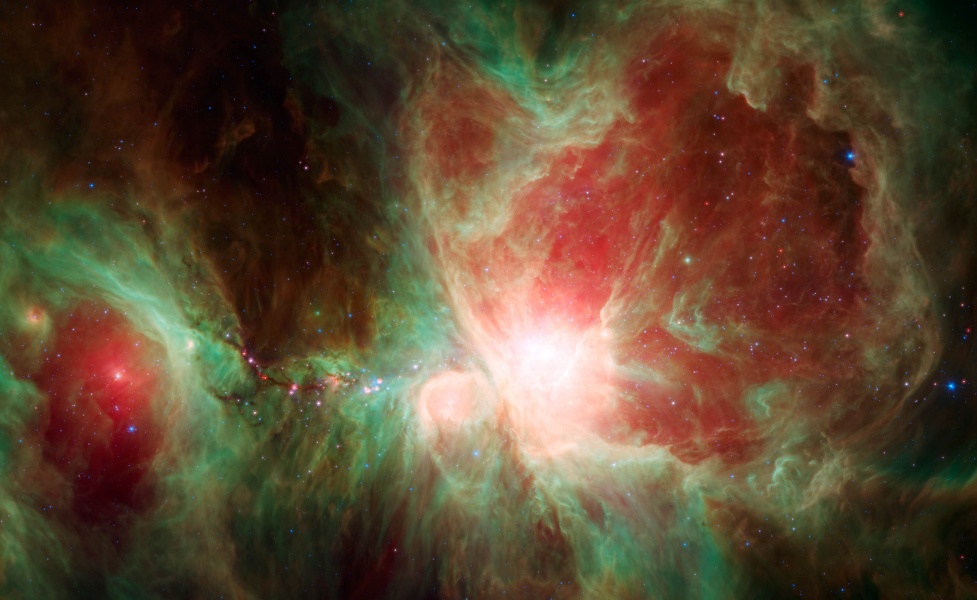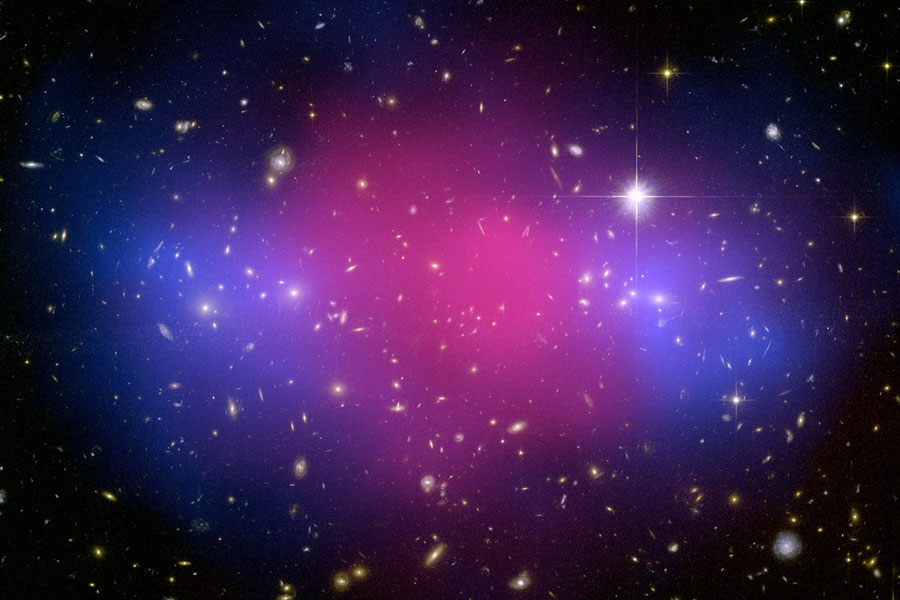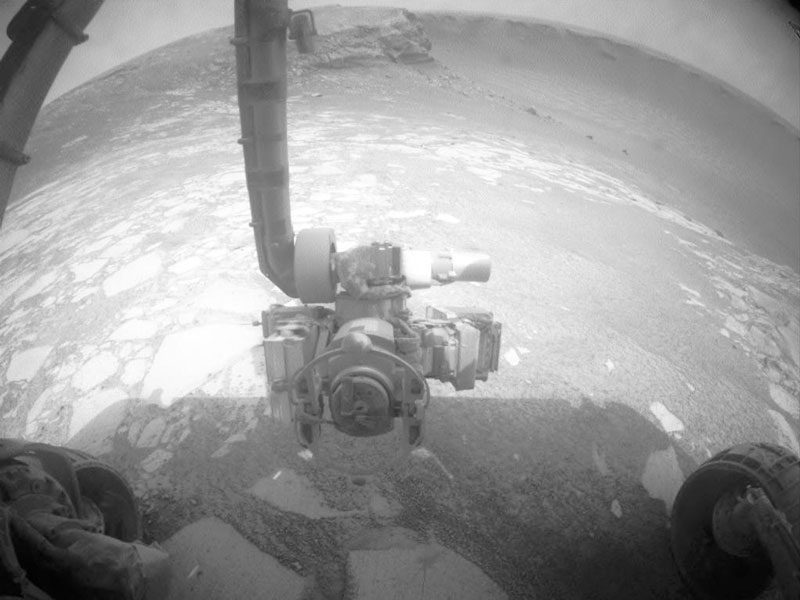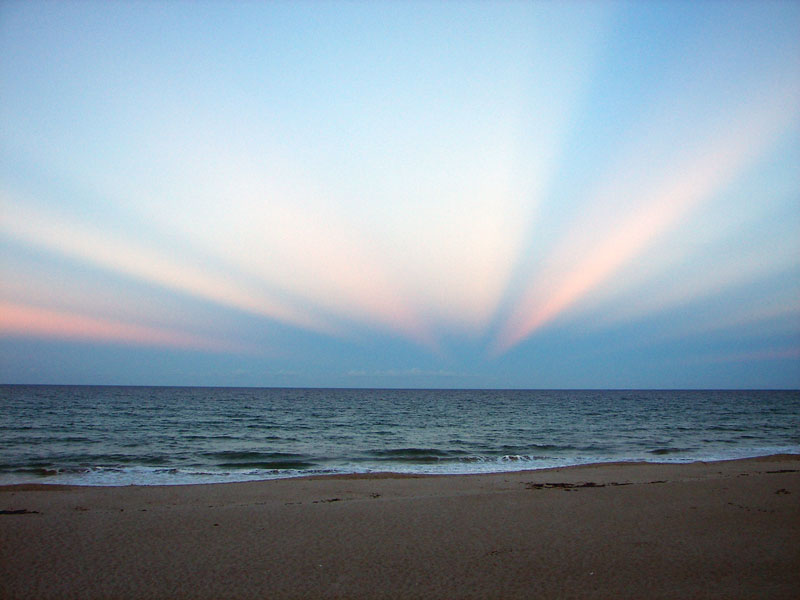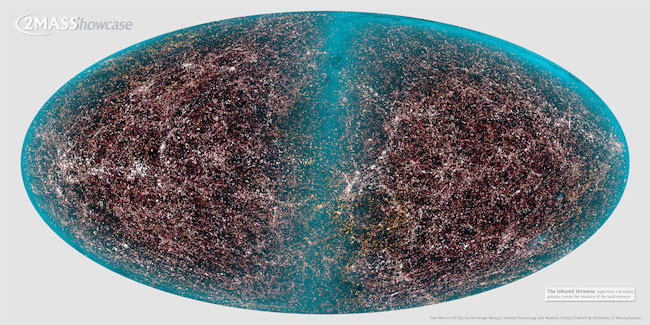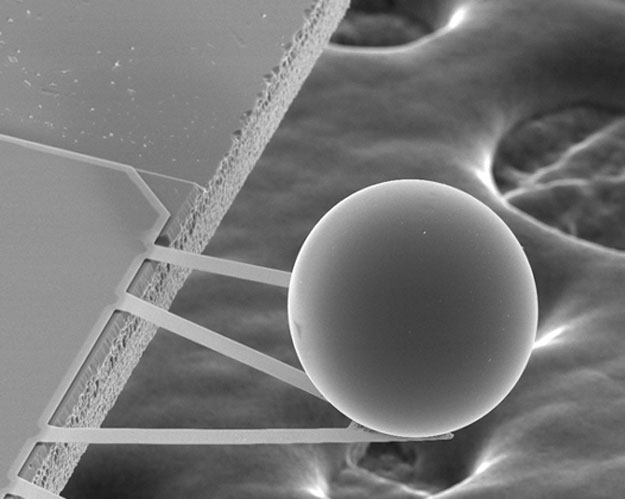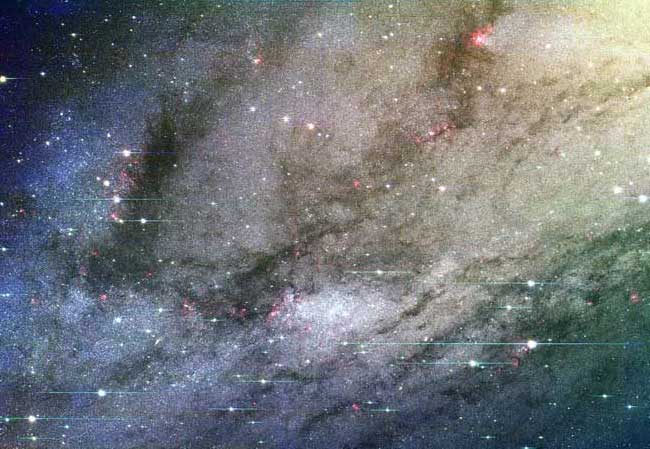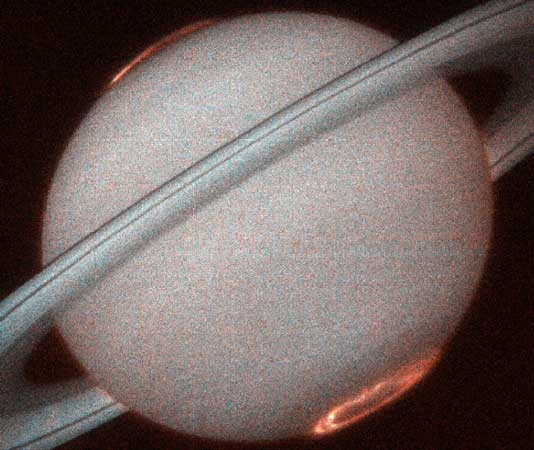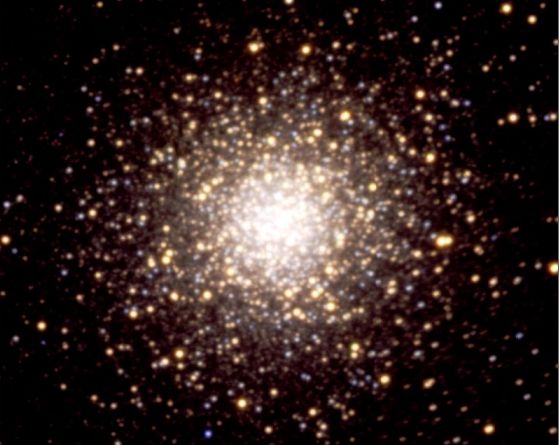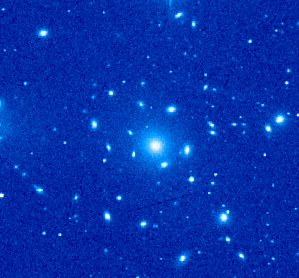| << Previous | Index | Next >> |
2015 Chaotic in appearance, these filaments of shocked, glowing gas break across planet Earth's sky toward the constellation of Cygnus, as part of the Veil Nebula. The Veil Nebula itself is a large supernova remnant, an expanding cloud born of the death explosion of a massive star. Light from the original supernova explosion likely reached Earth over 5,000 years ago. Blasted out in the cataclysmic event, the interstellar shock waves plow through space sweeping up and exciting interstellar material. The glowing filaments are really more like long ripples in a sheet seen almost edge on, remarkably well separated into the glow of ionized hydrogen and sulfur atoms shown in red and green, and oxygen in blue hues. Also known as the Cygnus Loop, the Veil Nebula now spans nearly 3 degrees or about 6 times the diameter of the full Moon. While that translates to over 70 light-years at its estimated distance of 1,500 light-years, this field of view spans less than one third that distance. Identified as Pickering's Triangle for a director of Harvard College Observatory and cataloged as NGC 6979, the complex of filaments might be more appropriately known as Williamina Fleming's Triangular Wisp.
2014 It has been a good week for auroras. Earlier this month active sunspot region 2158 rotated into view and unleashed a series of flares and plasma ejections into the Solar System during its journey across the Sun's disk. In particular, a pair of Coronal Mass Ejections (CMEs) impacted the Earth's magnetosphere toward the end of last week, creating the most intense geomagnetic storm so far this year. Although power outages were feared by some, the most dramatic effects of these impacting plasma clouds were auroras seen as far south as Wisconsin, USA. In the featured image taken last Friday night, rays and sheets of multicolored auroras were captured over Acadia National Park, in Maine, USA. Since another CME plasma cloud is currently approaching the Earth, tonight offers another good chance to see an impressive auroral display.
2013
2012 What's happened to our Sun? Nothing very unusual -- it just threw a filament. At the end of last month, a long standing solar filament suddenly erupted into space producing an energetic Coronal Mass Ejection (CME). The filament had been held up for days by the Sun's ever changing magnetic field and the timing of the eruption was unexpected. Watched closely by the Sun-orbiting Solar Dynamics Observatory, the resulting explosion shot electrons and ions into the Solar System, some of which arrived at Earth three days later and impacted Earth's magnetosphere, causing visible aurorae. Loops of plasma surrounding an active region can be seen above the erupting filament in the ultraviolet image. If you missed this auroral display please do not despair -- over the next two years our Sun will be experiencing a solar maximum of activity which promises to produce more CMEs that induce more Earthly auroras.
2011 Few cosmic vistas excite the imagination like the Orion Nebula, an immense stellar nursery some 1,500 light-years away. This stunning false-color view spans about 40 light-years across the region, constructed using infrared data from the Spitzer Space Telescope. Compared to its visual wavelength appearance, the brightest portion of the nebula is likewise centered on Orion's young, massive, hot stars, known as the Trapezium Cluster. But the infrared image also detects the nebula's many protostars, still in the process of formation, seen here in red hues. In fact, red spots along the dark dusty filament to the left of the bright cluster include the protostar cataloged as HOPS 68, recently found to have crystals of the silicate mineral olivine within its protostellar envelope.
2010 Curtains of shimmering green light sprawl across this gorgeous night skyscape. In the foreground lies the peaceful Prelude Lake, located about 30 kilometers east of Yellowknife, Northwest Territories, Canada. From high northern latitudes these mesmerizing northern lights, also known as the aurora borealis, are becoming a more familiar sight. As the September 23rd equinox approaches, nights grow longer and a favorable season for aurora begins. Recorded on September 11, this panoramic scene spans about 180 degrees. Brighter stars peering through the auroral glow at the left form the recognizable northern asterism, the Big Dipper. A more compact Pleiades star cluster shines at the far right.
2009
2008 What happens when two of the largest objects in the universe collide? No one was quite sure, but the answer is giving clues to the nature of mysterious dark matter. In the case of MACSJ0025.4-1222, two huge clusters of galaxies have been found slowly colliding over hundreds of millions of years, and the result has been imaged by both the Hubble Space Telescope in visible light and the Chandra Space Telescope in X-ray light. Once the above visible image was recorded, the location and gravitational lens distortions of more distant galaxies by the newly combined galaxy cluster allowed astronomers to computationally determine what happened to the clusters' dark matter. The result indicates that this huge collision has caused the dark matter in the clusters to become partly separated from the normal matter, confirming earlier speculation. In the above combined image, dark matter is shown as the diffuse purple hue, while a smoothed depiction of the X-ray hot normal matter is shown in pink. MACSJ0025 contains hundreds of galaxies, spans about three million light years, and lies nearly six billion light years away (redshift 0.59) toward the constellation of Monster Whale (Cetus).
2007 NASA's Opportunity rover is now inside Victoria Crater on Mars. Last week the robot rolled about 20 meters into the largest crater any Martian rover has yet encountered, the crater next to which Opportunity has been perched for months. Currently, the rolling explorer is situated in Duck Bay alcove, peering across at the internal crater wall dubbed Cape St. Vincent. The above wide-angle view is from Opportunity's front hazard-identification camera. Over the next few weeks, Opportunity is scheduled to explore this telling alien indentation, searching for clues to the ancient past of Mars before the huge impact that created Victoria Crater ever took place.
2006 What's happening over the horizon? Although the scene may appear somehow supernatural, nothing more unusual is occurring than a setting Sun and some well placed clouds. Strangely, the actual sunset was occurring in the opposite direction from where the camera was pointing. Pictured above are anticrepuscular rays. To understand them, start by picturing common crepuscular rays that are seen any time that sunlight pours though scattered clouds. Now although sunlight indeed travels along straight lines, the projections of these lines onto the spherical sky are great circles. Therefore, the crepuscular rays from a setting (or rising) sun will appear to re-converge on the other side of the sky. At the anti-solar point 180 degrees around from the Sun, they are referred to as anticrepuscular rays. While enjoying the sunset after visiting NASA's Kennedy Space Center in Florida, the photographer chanced to find that an even more spectacular sight was occurring in the other direction just over the Atlantic Ocean -- a particularly vivid set of anticrepuscular rays.
2005 Hurtling through space above the Red Planet, potato-shaped Phobos completes an orbit of Mars in less than eight hours. In fact, since its orbital period is shorter than the planet's rotation period, Mars-based observers see Phobos rise in the west and set in the east - traveling from horizon to horizon in about 5 1/2 hours. These three images from the Mars Global Surveyor (MGS) spacecraft record the oval shadow of Phobos racing over western Xanthe Terra on August 26, 1999. The area imaged is about 250 kilometers across and is seen in panels from left to right as red filter, blue filter, and combined color composite views from the MGS wide-angle camera system. The three dark spots most easily seen in the red filter image are likely small fields of dark sand dunes on crater floors. Standing in the shadow of Phobos, you would see the Martian version of a solar eclipse!
2004 Sprawling across hundreds of light-years, emission nebula IC 1805 is a mix of glowing interstellar gas and dark dust clouds. Only about 7,500 light-years away, stars were born in this region whose nickname - the Heart Nebula - derives from its suggestive shape (seen here sideways). This gorgeous, deep telescopic image of the nebula is very colorful, but if you could travel there and gaze across these cosmic clouds with your own eyes, are those the colors you would really see? The short answer is no, even though the image was made with light visible to the human eye. Light from this and other glowing gas clouds surrounding hot, young stars comes in very narrow bands of emission characteristic of energized atoms within the clouds. In fact, the nebular glow is often dominated by hydrogen atoms emitting light in only a small fraction of that broad region of the spectrum that we see as the color red. Adopting an artificial color scheme commonly used for narrow band images of emission nebulae, this beautifully detailed view shows the light from sulfur atoms in red hues, with hydrogen in green, and oxygen atoms in blue.
2003 Are the nearest galaxies distributed randomly? A plot of over one million of the brightest "extended sources" detected by the Two Micron All Sky Survey (2MASS) shows that they are not. The vast majority of these infrared extended sources are galaxies. Visible above is an incredible tapestry of structure that provides limits on how the universe formed and evolved. Many galaxies are gravitationally bound together to form clusters, which themselves are loosely bound into superclusters, which in turn are sometimes seen to align over even larger scale structures. In contrast, very bright stars inside our own Milky Way Galaxy cause the vertical blue sash.
2002 This tiny ball provides evidence that the universe will expand forever. Measuring slightly over one tenth of a millimeter, the ball moves toward a smooth plate in response to energy fluctuations in the vacuum of empty space. The attraction is known as the Casimir Effect, named for its discoverer, who, 50 years ago, was trying to understand why fluids like mayonnaise move so slowly. Today, evidence is accumulating that most of the energy density in the universe is in an unknown form dubbed dark energy. The form and genesis of dark energy is almost completely unknown, but postulated as related to vacuum fluctuations similar to the Casimir Effect but generated somehow by space itself. This vast and mysterious dark energy appears to gravitationally repel all matter and hence will likely cause the universe to expand forever. Understanding vacuum fluctuations is on the forefront of research not only to better understand our universe but also for stopping micro-mechanical machine parts from sticking together.
2001 This new image composite of the southwest region of M31 from the Subaru Telescope shows many stars, nebulae, and star clusters never before resolved. An older population of stars near Andromeda's center causes the yellow hue visible on the upper right. Young blue stars stand out in the spiral arms on the lower left. Red emission nebula, blue open clusters of stars, and sweeping lanes of dark dust punctuate the swirling giant. Andromeda, at about 2.5 million light years distant, and our Milky Way are the largest galaxies in the Local Group of Galaxies. Understanding M31 helps astronomers to understand our own Milky Way Galaxy, since the two are so similar.
2000 Girdling the second largest planet in the Solar System, Saturn's Rings are one of the most spectacular sights for earthbound telescopes. This image from the orbiting Hubble Space Telescope's STIS instrument, offers a striking view of another kind of ring around Saturn - pole encircling rings of ultraviolet aurora. Towering more than 1,000 miles above the cloud tops, these Saturnian auroral displays are analogous to Earth's. Energetic charged particles in the Solar Wind are funneled by the planet's magnetic field into polar regions where they interact with atmospheric gases. Following the ebb and flow of Saturn's aurora, researchers can remotely explore the planet's atmosphere and magnetic field. In this false color image, the dramatic red aurora identify emission from atomic hydrogen, while the more concentrated white areas are due to hydrogen molecules. In 2004, NASA plans to begin making close-up studies of the Saturnian system with the Cassini Spacecraft.
1999 This immense ball of half a million stars older than the sun lies 30,000 light-years above the plane of our Galaxy. Cataloged as M3 (and NGC 5272), it is one of about 250 globular star clusters which roam our galactic halo. Individual stars are difficult to distinguished in the densely packed core but colors are apparent for the bright stars on the cluster's outskirts. M3's many cool "red" giant stars take on a yellowish cast in this lovely composite image while hotter giants and pulsating variable stars look light blue.
1998 Since the early days of radio and television we have been freely broadcasting signals into space. For some time now, we have been listening too. Ohio State University's radio telescope, affectionately known as "The Big Ear" , was one of the first and largest listeners. Designed by John Kraus, OSU's Big Ear (about the size of three football fields) consisted of an immense metal ground plane with two fence-like reflectors (one fixed and one tiltable) and relied on the Earth's rotation to help scan the sky. This photo, taken by former Big Ear student volunteer Rick Scott, looks out across the ground plane toward the fixed reflector with the "receiver horns" in the foreground. This May, the final pieces of the Big Ear were torn down, but its explorations of the radio universe will be long remembered.
Starting in 1965, the Big Ear was used in an ambitious premier survey of the radio sky, ultimately finding over 20,000 celestial radio sources. Changing its focus in the 1970s, it became the first telescope to continuously listen for signals from extraterrestrial civilizations. For an exciting moment during August 1977 a very strong and unanticipated signal, dubbed the Wow! Signal, was detected by the Big Ear. But alas, heard only once, the cause of the signal could not be determined.
1997 It's still there. The optical counterpart to the instantly famous gamma-ray burst (GRB) that occurred last February 28th has faded - but not completely. The astronomical community had waited patiently for months for the Earth to proceed far enough along in its orbit so that the Sun's glare no longer ruined inspection of the location of this historic flash. The above picture of GRB 970228, taken September 5th and released just yesterday, shows an extended structure in the center that hasn't changed. However, the arrow indicates a point on the upper right that is now five times dimmer than in preceding months. This fading point fits a model where the GRB originated in a fireball across the universe. The constant brightness of the extended feature indicates that it is not reflected emission from the GRB and might be the host galaxy. Even so, the great GRB mystery is not yet over: for one thing, how come other GRBs don't appear to occur in galactic hosts?
1996
1995
| << Previous | Index | Next >> |
